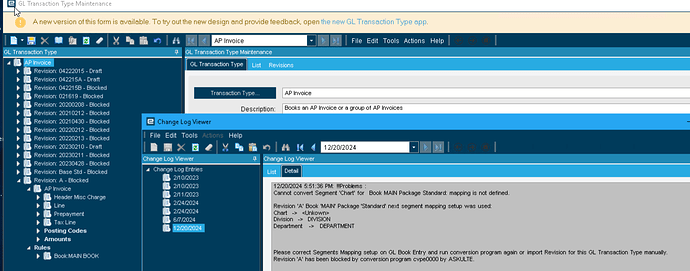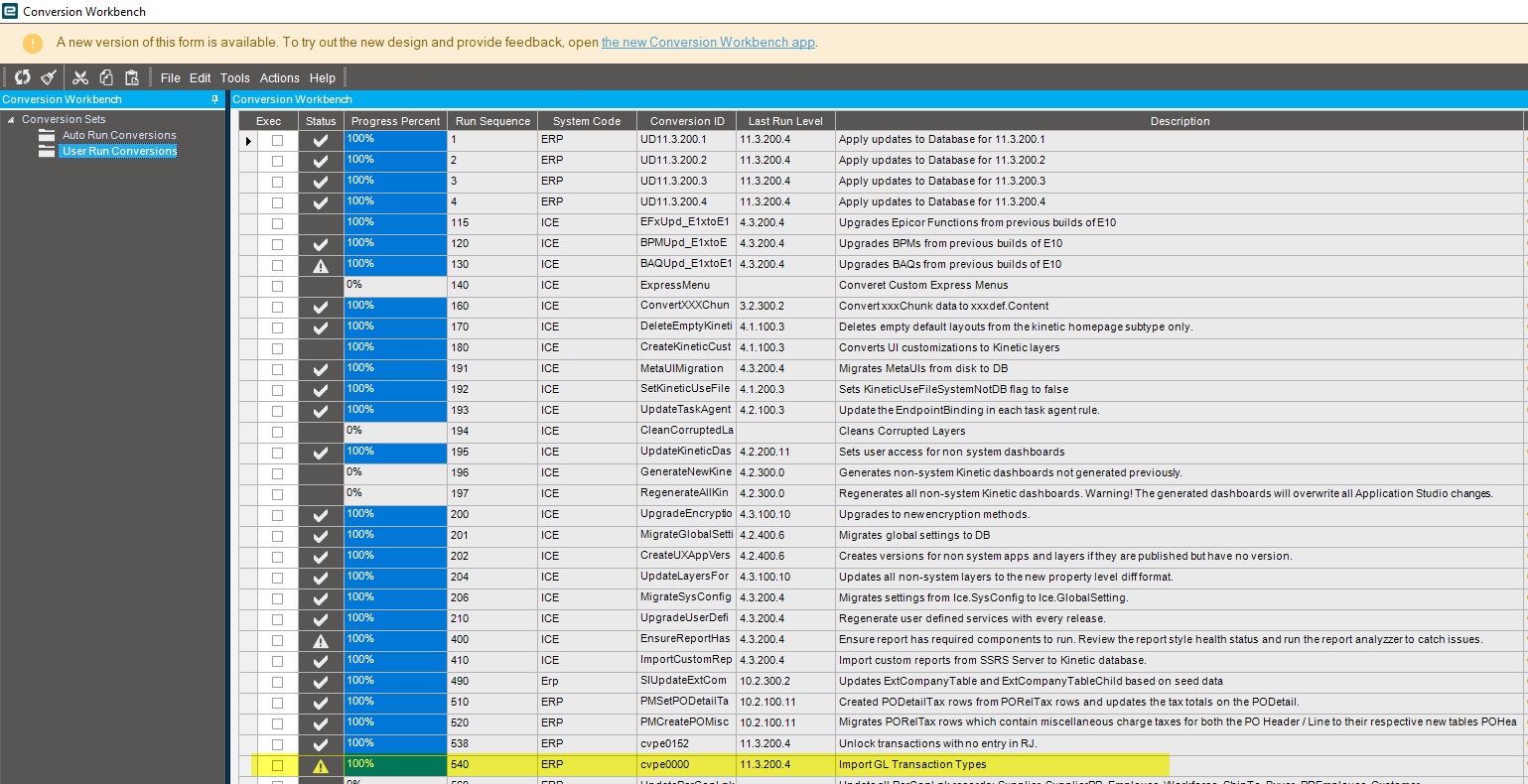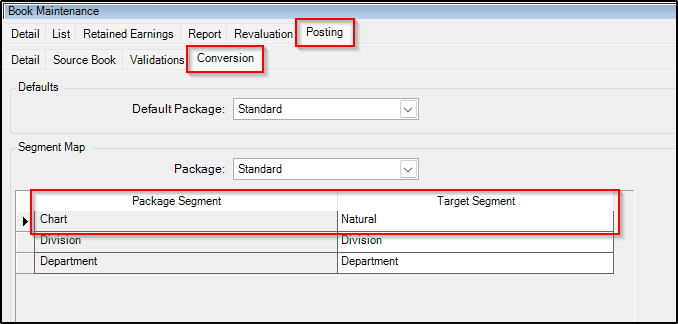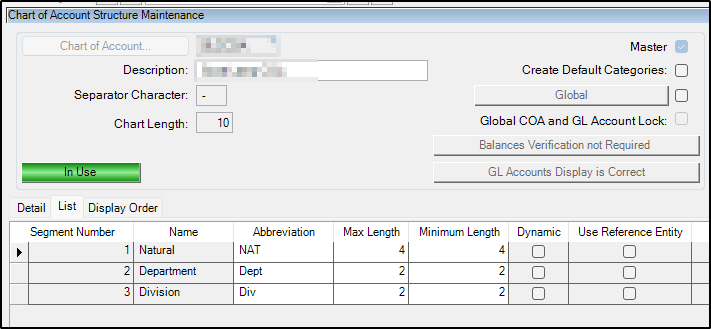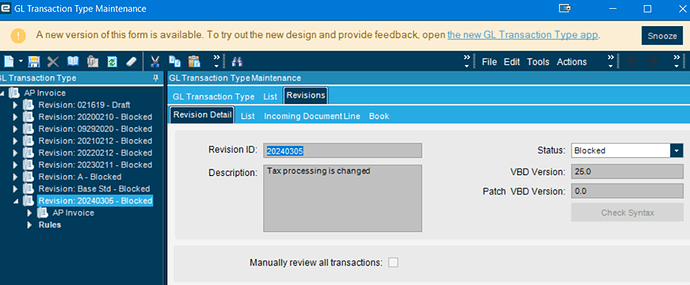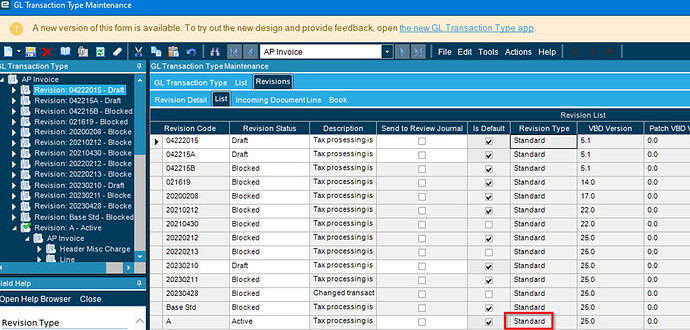Some progress and more questions.
I just created a 2024.2.8 Upgrade environment (from a 2023.2.x LIVE snapshot). Every year, the AP Invoice GL Transaction Type comes in blocked, and errors the 540 conversion (probably since it’s a very small change that makes it a custom posting ruler per KB0099806).
Why? If I look in Book Maintenance, the default package is set to Extended, so segments are not set, so they couldn’t be missing. Yet GL Trans Type for AP Invoice (grid view) shows Standard, but not any place to set the segments.
We re-import the AP Invoice rule to replace the blocked one, and make it the active revision. This fixes the issue (the 540 conversion then does not error if I re-run it). I’d like to fix this so our upgrades go smoothly and don’t require imports every time.
We did change the posting rule based on KB0099806 last year. It seems like Epicor kept the change during the upgrade.
I’m still at a loss what Importing the posting rules does, why it’s needed, when I don’t do any other changes afterward to make it work.
Thanks for helping clarify this mystery!
EpiCare response:
Thank you for bringing this to our attention. We want to assure you that we are fully aware of the issue and that our Development Department is actively working on a solution to address it.
This particular issue is commonly related to the AP Invoices Posting Rule, and we’ve observed similar cases with a few other customers following recent upgrades. Rest assured, this is being treated with priority, and we are committed to resolving it promptly.
As part of the resolution process, one effective solution has been re-importing the posting rule, which has worked successfully for other customers facing the same issue.

KB0099806


